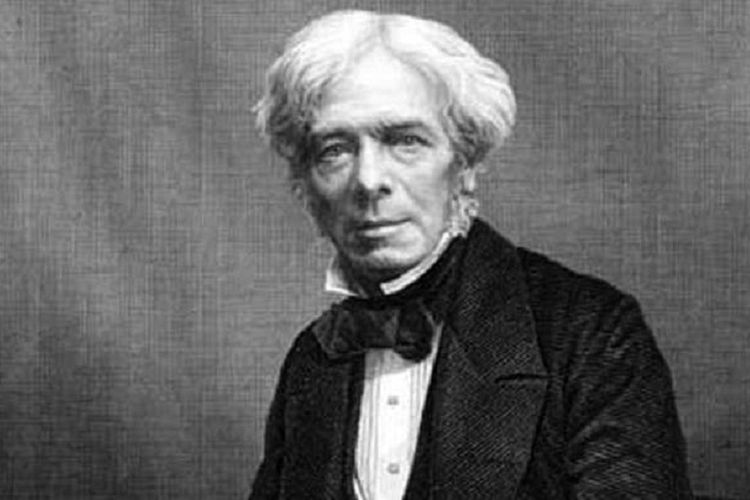Michael Faraday (1791-1867), was a physicist and chemist from England. His well-known discoveries are electromagnetic induction and the laws of electrolysis. Faraday’s initial research was in chemistry, under the guidance of Sir Humphry Davy and found two types of carbon chloride and benzene. In his research, Faraday also succeeded in liquefying several types of gases.
Michael Faraday is an expert in chemistry and physics. He was born on September 22, 1791 and died on August 25, 1867. He is known as a pioneer in researching electricity and magnetism, even many scientists say that he is the greatest researcher of all time. Some of the concepts he derived directly from experiments, such as lines of magnetic force, have become ideas in modern physics.
Faraday was born in a poor family in Newington, Surrey near London. Young Faraday was a critical child, but he received little education compared to primary school. Even so, it did not make him feel inferior and give up hope to continue learning. When he was 14 years old, he was apprenticed in a bookbinding business. This is where he got interested in physics and chemistry. After hearing the lecture of a famous chemistry lecturer at the time, Humphry Davy, he sent his lecture notes to the lecturer. It turned out that the lecturer was interested and appointed Faraday as his assistant at the famous University Laboratory in London, when he was 21 years old.
In his first year of work in the laboratory, Faraday discovered two chlorocarbons and succeeded in liquefying chlorine gas and several other gases. Then managed to separate benzene compounds in 1825 where he was appointed chairman of the laboratory.
In 1807, Davy, who had a great influence on Faraday’s thought, had predicted that the metal sodium and potassium could be precipitated from their compounds by means of an electric current, a process known as electrolysis. Faraday passionately tried hard to prove his professor’s prediction and in 1834 it became a reality, a new law on electricity emerged, known as Faraday’s Law.
Faraday’s research into electricity and electrolysis was guided by his belief that electricity is one of the other forces of nature such as heat, light, magnetism and chemical tendencies. Although his idea was wrong, this made him enter the electromagnetic world.
In 1821, Faraday investigated the magnetic field around a conductor that was energized by an electric current which was first discovered by Hans Christian Oersted in 1819. In 1831 Faraday discovered electromagnetic induction and showed the emergence of an induced current in a coil due to an electric current in another coil. . At the same time, Faraday also conducted successful research in the field of electrolysis.
The thought and one experiment of electromagnetic phenomena that Faraday demonstrated regarding the concept of lines of force were refuted by most of the European mathematical physicists, they assumed that electric charges attracted and repelled each other by distance and made the lines of force insignificant. However, a well-known physicist at the time, James Clerk Maxwell accepted Faraday’s thoughts and converted them to mathematical equations and became the cornerstone of the birth of modern field theory.
Another result of Faraday’s creativity (1845) was about the intensity of a magnetic field that could rotate a polarized light field and is now known as the Faraday effect. This phenomenon has been used to determine molecular structures and provide information about the magnetic fields of galaxies.
Faraday describes much of his research on electricity and electromagnets in three volumes entitled Experimental Researches in Electricity (1839, 1844, and 1855). His research notes are dated in Experimental Researches in Chemistry and Physics (1858). In 1855, Faraday stopped researching because of health problems but he continued his work as a lecturer until 1861. On August 25, 1867, Faraday the inventor died leaving all his work, but all his services, both products and thoughts, will always be remembered by the world and make him the true inventor.
Michael Faraday’s work
- 27 Oct 1813 With Humphrey Davy investigating his theory of volcanic activity.
- 1821 Describes the dynamo principle.
- 1821 Invented the first electric motor.
- 1821 Examining the magnetic field around conductors.
- 1823 Melts chlorine gas.
- 1831 Discovering electromagnetic induction.
- 1831 Research on moving magnets causes electric currents.
- 1831 Finding lines of magnetic force.
- 1831 Invented the electric dynamo.
- 1831 Inventing electric transformers.
- 1831 Making laws about induction.
- 1832 Explaining the laws of electrolysis and taking the term “ion” for the particles believed to be responsible for carrying current.
- 1833 Developed his laws in the field of electrolysis.
- 1845 Investigating the rotation of light polarized by magnetic fields.
- 1845 Discovered that the propagation of light in matter can be affected by external magnetic fields.
- 1850 Corrects his failed research to find a relationship between gravity and electromagnetic fields.
25 August 1867 Michael Faraday died in England as a chemist and physicist who contributed to the advancement of science

